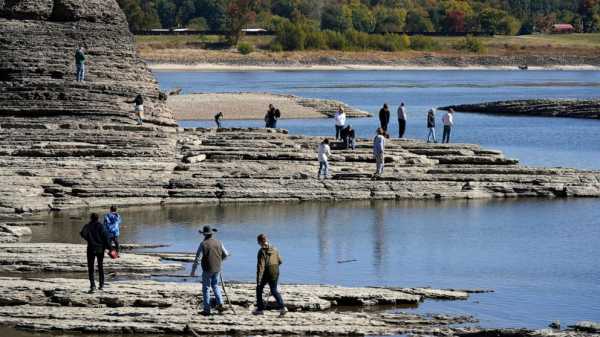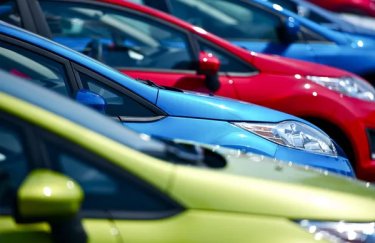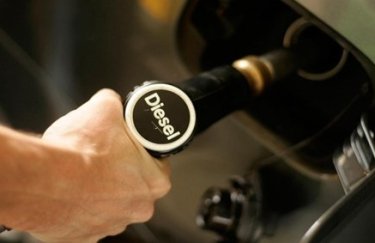
NEW YORK — Drought in California meant Raquel Krach, a rice farmer and graduate student in the Sacramento Valley, planted very little. Using groundwater, she and her husband planted 75 acres this year to maintain their markets. The rest of the 200 acres she typically sows remained empty due to an inadequate water supply.
The 53-year-old Democrat said it’s clear to her that climate change is responsible. But she says that notion is a deeply divisive one in her community.
“Our connections to our neighbors are pretty limited because our views are so different. Climate change is normally a topic we don’t even broach because our views are so different,” Krach said.
The impacts of climate change hit communities across the country, including Krach’s, yet voters in rural communities are the least likely to feel Washington is in their corner on the issue. Rural Americans and experts suggest there’s a disconnect between the way leaders talk about climate change and the way these communities experience it.
AP VoteCast, a sweeping survey of the 2022 midterm electorate, shows clear differences between urban and rural communities in voter sentiment on President Joe Biden ’s handling of climate, and whether climate change is impacting their communities.
About half of voters nationwide approve of the president’s handling of the issue, despite the passage of the Inflation Reduction Act this summer that meant historic investments aimed at reducing the emissions that cause climate change. While around 6 in 10 urban voters approve, the figure drops to about half for suburbanites and roughly 4 in 10 for rural voters.
The urban-rural divide exists within the Republican Party, showing those differences aren't driven solely by a partisan split between bluer cities and redder countryside. While 27% of urban Republicans approve of Biden’s leadership on climate, only 14% of small-town and rural Republicans say the same, VoteCast showed.
Sarah Jaynes, the executive director of the Rural Democracy Initiative, which provides funding to groups that support progressive policies in rural areas, suggested the overarching urban-rural divide has a lot to do with messaging issues.
“People in rural areas and small towns are less likely to think that Democrats are fighting for people like them, so there’s a partisan trust issue,” Jaynes said. “I think there’s an issue where people don’t want to signal that they’re supporting Democrats in rural communities right now.”
VoteCast also shows that despite nationwide climate crises — from hurricanes to wildfires to droughts — there’s varying concern among voters about whether climate change is in their backyards. About three-quarters of urban voters are at least somewhat worried about the effects of climate change in their communities, compared to about 6 in 10 suburbanites and about half of small-town and rural voters.
That difference isn't necessarily explained by a lack of belief in climate change within rural communities. A September AP-NORC poll showed majorities across community types say climate change is happening.
“If you’re speaking to climate generally, rural people can feel like ‘well, do you really care about me? Are you talking about me?’” Jaynes said. “If you ask them ‘are you concerned about flooding? Are you concerned about the water crisis? Are you concerned about the impacts of extreme weather?’ You’re going to hear a lot more positively when you meet them where they are.”
In Krach’s community, she said “everyone is very clear on that there’s no water and that there’s a drought. Whether they attribute that to climate change is different.”
Nationally, extreme weather has meant agriculture has taken huge hits. Krach’s experience isn’t unique: ongoing drought in California meant that Colusa and Glenn counties saw their rice acreage drop by at least three-quarters, according to an analysis by UC-Davis agricultural economist Aaron Smith. In Texas, drought and a heat wave meant a whopping near 70% of cotton crops are likely to be abandoned. In Georgia, farmers have started growing citrus, as weather warms up and becomes increasingly untenable for the peach.
Johnathan Hladik, the policy director at the Center for Rural Affairs in Nebraska, an organization focusing on rural community development, including environmental stewardship, said the nature of much of the work rural people do makes looking at the global scale difficult – like in agriculture.
“Farmers are experiencing climate change in a much different way than many more urban people do. It’s in every part of their job. It’s almost like it’s a day to day battle. You’re in the trenches every single day and it’s really hard to step back and look at it big-picture-size,” he said.
Olivia Staudt, a 20-year-old junior at Iowa State University, grew up on a fourth-generation corn, bean and row crop operation in Marble Rock, Iowa. The Republican said another factor contributing to the divide on climate issues is that some rural people think urban communities assign them disproportionate blame on climate issues without looking in the mirror.
“There always needs to be a scapegoat, and it feels like that’s what rural communities are to a lot of these urban areas,” Staudt said. “But no one has all the blame or creates all the issues.”
Staudt knows first-hand how much farming communities think about natural resources — her family not only uses the land but maintains it for the future, and that connection to the Earth can be farther off for urban residents. When she sees new big developments in cities and smog, paired with a perception of the agriculture sector getting blamed for climate change, it feels off.
The findings are complicated by a lack of knowledge on Biden’s climate actions. September's AP-NORC poll found that about 6 in 10 U.S. adults said they knew little to nothing about the Inflation Reduction Act — a law widely heralded as the largest investment in climate spending in history.
The IRA, which Biden signed into law in August, included about $375 billion in investments in climate over 10 years. Among other things, the legislation provides around $260 billion in tax credits for renewable energy and offers consumer rebates to households for heat pumps and solar panels, and up to $7,500 in electric vehicle credits.
Some elements of the law are geared towards the agriculture sector, too. According to the U.S. Department of Agriculture, the law includes $20 billion to conservation programs run by the department, $3 billion in relief for distressed USDA borrowers whose operations are at financial risk, and $2 billion in financial assistance to farmers who have experienced past discrimination in USDA lending programs.
———
Follow the AP’s coverage of the 2022 midterm elections at https://apnews.com/hub/2022-midterm-elections. Find more details about AP VoteCast’s methodology at https://www.ap.org/votecast.
Sourse: abcnews.go.com






